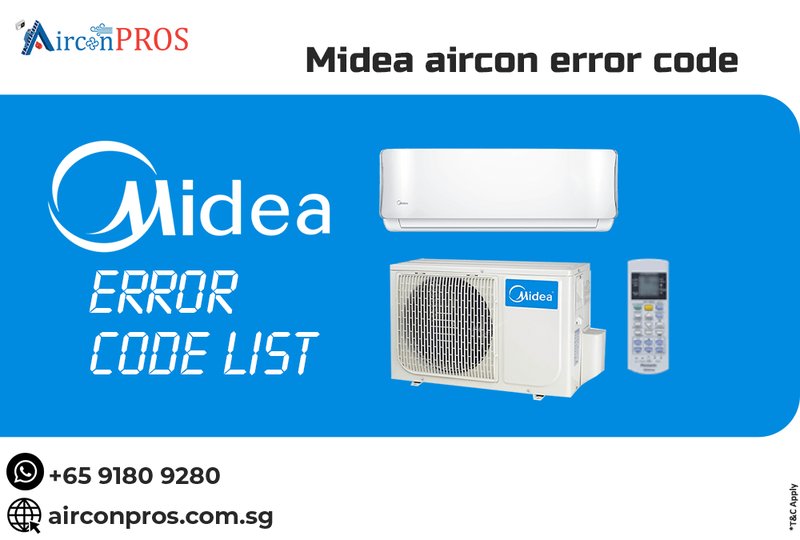
First off, encountering error codes on devices like air conditioners can be quite daunting, especially if you’re not particularly tech-savvy. But fear not, dear reader, we’re here to unravel the mystery. An error code like E1 on your Midea air conditioner might signal a variety of issues, ranging from a minor glitch in the system to something that needs a bit more attention. The good news is that understanding what E1 represents is the first step toward finding a solution that might not empty your pockets.
Understanding Error Code E1
So, you’re staring at the E1 code and wondering, “What on earth does this mean?” Well, think of it like a check engine light in your car. It’s a signal from your air conditioner that something needs checking. In most Midea air conditioners, the E1 code is typically related to a problem with the temperature sensor or a communication issue between the control board and the display.
The temperature sensor, as the name suggests, monitors the ambient temperature and ensures your air conditioner maintains the desired climate you’ve set. If it’s not working properly, it’s similar to having a compass that can’t find north—you simply won’t get the right results. Another possible issue is a failure in the communication between different parts of the air conditioner, which can disrupt its ability to function effectively.
But here’s the deal: just because you see E1 doesn’t automatically mean a major breakdown or hefty repair cost. It might just need a reset or a quick check-up. However, knowing this doesn’t answer the big question: is it covered by your warranty?
What Your Warranty Typically Covers
Now, you might be wondering, “Does my warranty have my back for this E1 hiccup?” Warranties can be a lifesaver when it comes to unexpected appliance glitches. Generally, a standard warranty on a Midea air conditioner covers defects in materials and workmanship for a specified period. This can vary widely depending on whether it’s for parts, labor, or both.
Think of your warranty like an umbrella for unexpected rain on a sunny day. It protects you from paying out of pocket for certain covered repairs. However, it usually doesn’t cover issues stemming from improper use or unauthorized repairs. So, if E1 results from something like a sudden power surge, home user error, or an expired warranty, you might have to handle the costs yourself.
The best move is to check your warranty documentation or contact Midea directly. They can confirm what’s covered and guide you toward the next steps. Meanwhile, if you’re unsure about your warranty’s terms, review them closely, or reach out to your retailer for more clarity.
Steps to Take If You Encounter Error Code E1
Alright, you’ve got the E1 code. What now? The first step is simple: don’t panic. A calm mind can solve problems much more effectively. Start by checking your user manual for any troubleshooting steps. Most manuals include a section for error codes, offering quick fixes or suggestions.
If you’re comfortable, try performing a reset of your unit. This can sometimes clear minor glitches that trigger error codes. It’s like rebooting your computer when it freezes—a fresh start can work wonders. To reset your air conditioner, usually unplugging it for a few minutes and plugging it back in does the trick.
However, if the error persists, it’s wise to call in the experts. A qualified technician will diagnose the problem more thoroughly. If your warranty covers E1 related issues, contacting Midea or an authorized service provider ensures you won’t void your warranty through unauthorized repairs.
Preventative Tips to Avoid Future E1 Codes
Want to avoid the E1 code popping up again? Like maintaining a car, regular upkeep on your air conditioner can prevent many common issues. Think of it as giving your unit a health check-up. Clean or replace filters regularly to ensure airflow isn’t restricted. This simple step can prevent sensor issues which often lead to error codes.
Also, consider where your air conditioner is installed. Ensure that it’s not blocked by furniture or too exposed to dust. Just like an athlete needs clear airways, your unit needs unobstructed airflow to perform optimally.
Lastly, stay on top of any strange noises or irregular performance from your air conditioner. Early detection is key. Contacting a professional when you first notice an issue can save you from facing more serious problems down the line.
So, next time you see E1 flash, you’ll know exactly what to do and whom to call. With the right steps, you’ll be back to enjoying those cool, comforting breezes in no time!